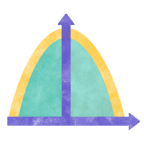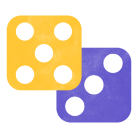Wahrscheinlichkeit
Entdecke die Wahrscheinlichkeit und übe die unterschiedlichen Konzepte mit interaktiven Unterrichtsmaterialien von GeoGebra.
Sekundarstufe 1
Schulstufe 7-8
Mehrstufige Zufallsexperimente
Ermitteln von Laplace-Wahrscheinlichkeiten bei zweistufigen Zufallsexperimenten (mithilfe von Baumdiagrammen); Interpretieren dieser Wahrscheinlichkeiten; Erstellen und Interpretieren von Baumdiagrammen.
Schätzen von Wahrscheinlichkeiten
Schätzen von Wahrscheinlichkeiten mithilfe empirisch gewonnener relativer Häufigkeiten.
Verwandte Themen
Unterrichtsmaterialien
Entdecke eine umfangreiche Sammlung von über einer Million Mathematik- und Naturwissenschaftsaktivitäten, Übungen und Lektionen, die von unserer globalen GeoGebra Community sorgfältig zusammengestellt wurden. Tauch ein in die grenzenlosen Möglichkeiten, die dich erwarten!

Jetzt kostenlos starten und Mathe digital unterrichten oder lernen
Erstelle dein kostenloses GeoGebra-Konto, um interaktive Mathe-Materialien zu speichern, anzupassen und zu teilen – perfekt für Lehrer:innen, Schüler:innen und Eltern.









